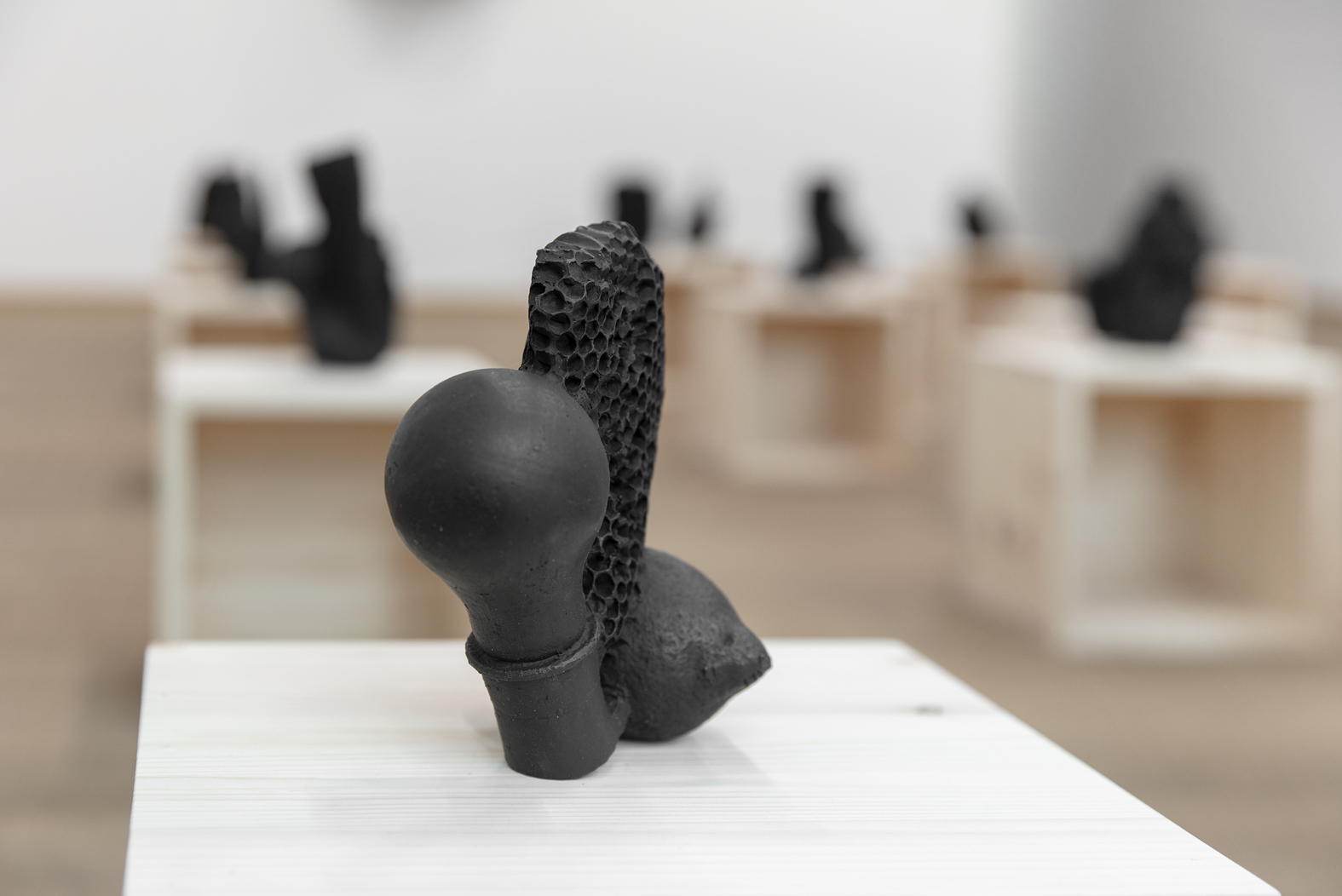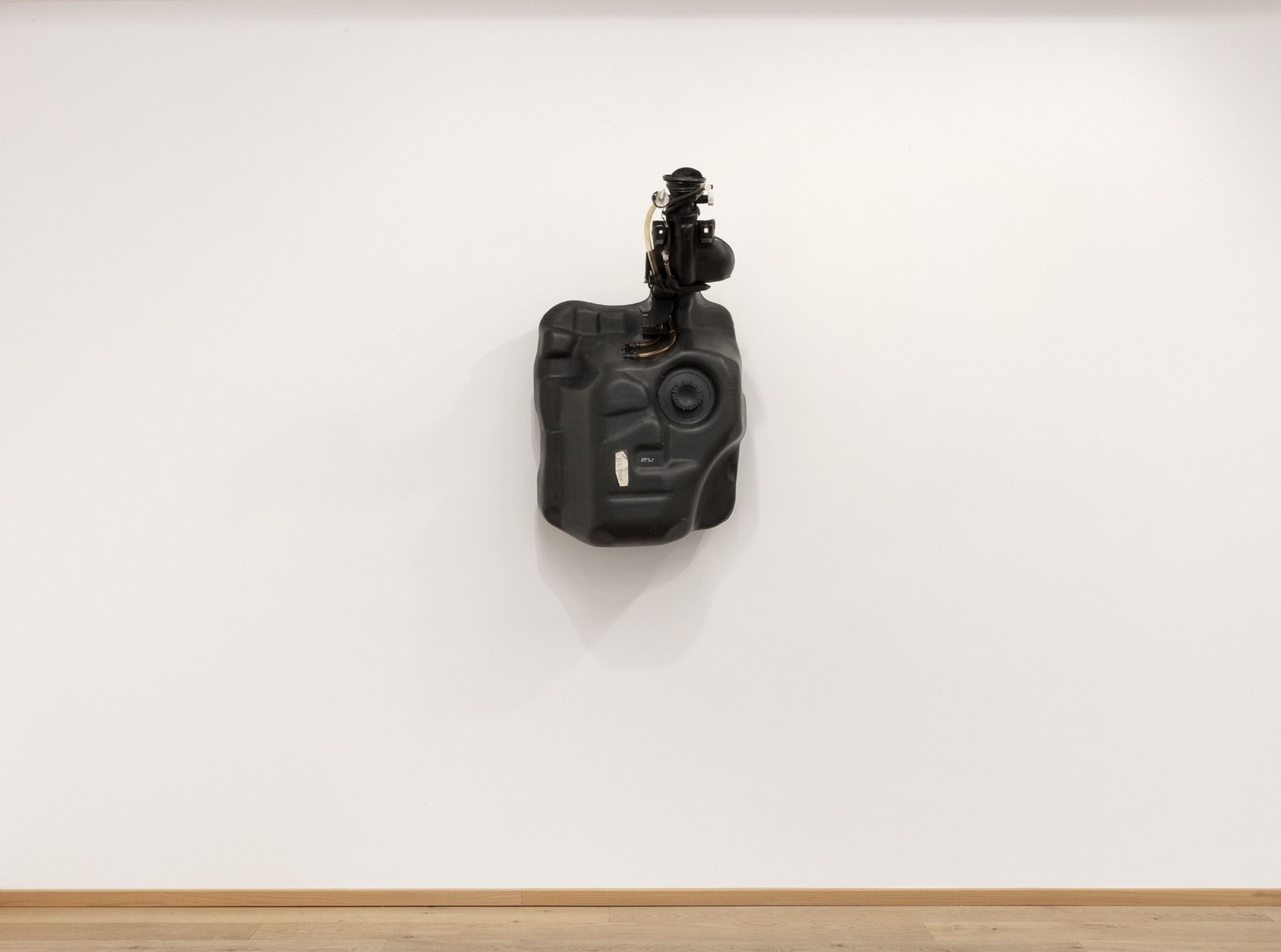MICHAEL SAILSTORFER | BATTERIE
We are pleased to show new works by Michael Sailstorfer in the second solo exhibition of the artist at the gallery.
On this occasion, we are also presenting the new publication “MS0022 – Michael Sailstorfer: Work 2000-2022”.
Michael Sailstorfer (*1979, Velden, Germany, lives and works in Berlin) reflects in his artistic practice on the fact that the fragile balance of our contemporary society – our social, political, ecological and cultural environment characterized by the finiteness of available resources – is subject to the constant threat of depleted energy sources. Both in a metaphorical and literal sense: Sailstorfer detaches various elements of the empirical world from the context of our everyday experience and presents them in formally precise sculptures as semantically redefined objects that question the principles of our contemporary culture. Driven by a fascination with biological and mechanical processes, Sailstorfer detaches natural, industrially produced, or found materials from their original context and transforms them into aesthetic settings that expand familiar questions about form and the nature of sculpture to include social, political, and economic aspects.
The twenty bronze sculptures C Batterie 1 – 20, 2023, are the centerpiece of the exhibition Batterie at Livie Gallery on Claridenstrasse 34 in Zurich. Cast in bronze, they show a light bulb with its socket, connected to a lemon and subsequently overgrown by a bee colony with a honeycomb structure. Joseph Beuys’ Capri Batterie, created in 1985 during a healing stay by the shaman on Capri and in Naples, is the obvious reference for Sailstorfer’s experimental arrangement. Sailstorfer has cast the multiple of Beuys – the circuit between lemon and light bulb, which is stored in a wooden box measuring 28 x 28 x 28 cm with the inscription “Joseph Beuys, Capri Batterie, replace after 1000 hours” – and made 20 duplicates out of beeswax. These forms were placed by a beekeeper into hives in spring 2022 to allow the colonies to continue working on them. After 3 to 4 months – at the end of a summer – the structures were removed from the hives and cast in bronze. The work of the bees was thus manifested or inscribed into a specific form for an indefinite future.
The visual result of this experimental arrangement is a dramatic material transformation of an existing icon of the visual arts. It involves 20 concrete individual cases of an organic process whose rules and limits are programmatically or systematically given, but whose final appearance could only be influenced by the artist to a limited extent. Sailstorfer’s appropriation thus becomes a metaphor for an act of meditation on the possibilities and limitations of producing and storing energy, as well as on the ability to create an organic structure that is inherent in a unique rhythm – the instinctive program of a bee colony. This is done with the intention of making visible a very specific social organization. Without wanting to overemphasize the reference to Beuys, the analogies are obvious: the analogy to the sun, to light, to shadow, to the bloom, to the lemon, to the wax, to the honey, to the productivity of the individual in the collective.
The second work in the exhibition space is titled Tank 1. It is the empty fuel tank of a VW Passat, which, in its placement in the white box of the exhibition space, takes on anthropomorphic – that is, humanoid – features and possibly specifically recalls an oceanic mask. A breathing sound is emitted into the room through a speaker inside this hollow object. The references that this object creates are also multifaceted: the empty energy carrier of a car becomes the cavity that serves the propulsion and ventilation of the atmosphere of a common space.
Taking into account sociology, psychology, philosophy, cultural studies, and art history, Sailstorfer expands the medium of sculpture through transdisciplinary and transmedial border crossings. Characteristic of his work is a clear and precise ability to integrate artistic production into social life. Under the heading of “artistic research,” his works are designed as open-ended claims and presented to the public for discussion. Paradoxical simultaneities of objectification and subjectification, economization and collectivization, intellectualization, and sensualization are characteristic of these artworks. Like social, economic, political, or scientific hypotheses whose significance is solely a matter of fitting subjective manipulable data and facts, the exhibited artworks appear as precise measuring devices with no scale.
Lorenz Wiederkehr
For enquiries and more information please contact us at marie@liviegallery.com or caspar@liviegallery.com.
Michael Sailstorfer was born in 1979 in Velden, Vils, Germany. He currently lives and works in Berlin. From 1999-2005, he studied at the Akademie der Bildenden Künste in Munich, and received his MA in Fine Arts from Goldsmiths College, London in 2004. He has participated in numerous solo and group exhibitions throughout the world, including the recent exhibitions Heavy Eyes Dubai, Carbon 12, Dubai; Heavy Eyes Seoul, König Seoul; Plumbum, Livie Gallery, Zurich; Heavy Eyes, Avlskarl Gallery, Copenhagen; Tear Show, Galerie Perrotin, New York City; Clouds and Tears, Proyectos Monclova, Mexico City; Hitzefrei, König Galerie, Berlin; Wiesen bei Nacht, Kunstverein Wiesen, Wiesen; Michael Sailstorfer, CentrePasquArt, Biel/Bienne; Breakwater, Loushy Art & Projects, Tel Aviv; It might as well be spring, Rochester Art Center, Rochester, MN, USA; Kopf und Körper, Museum Kurhaus Kleve – Ewald Mataré-Sammlung, Kleve; Forst, Vattenfall Contemporary, Berlinische Galerie, Berlin; Tornado, Public Art Fund New York, Doris C. Freedman Plaza, Central Park, New York City, amongst many others.
Photos installation views: Esther Mathis











